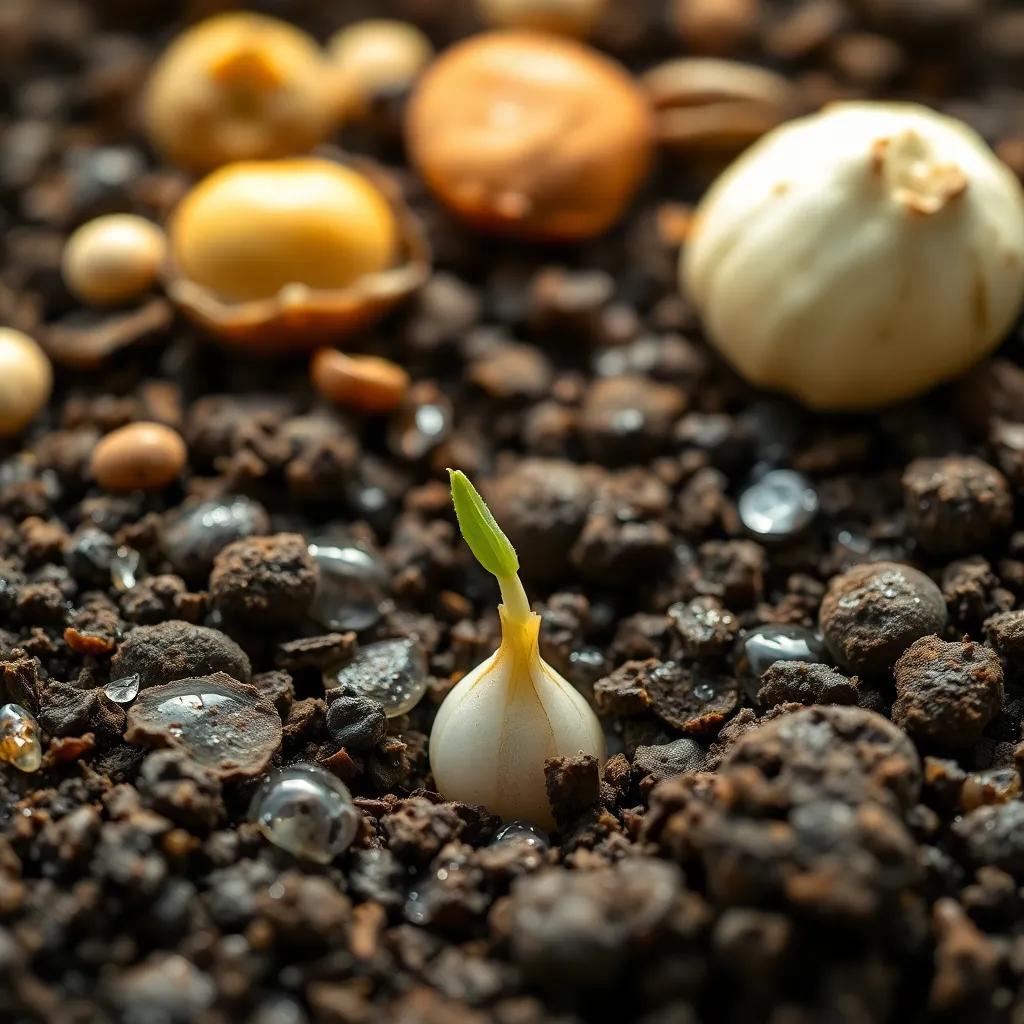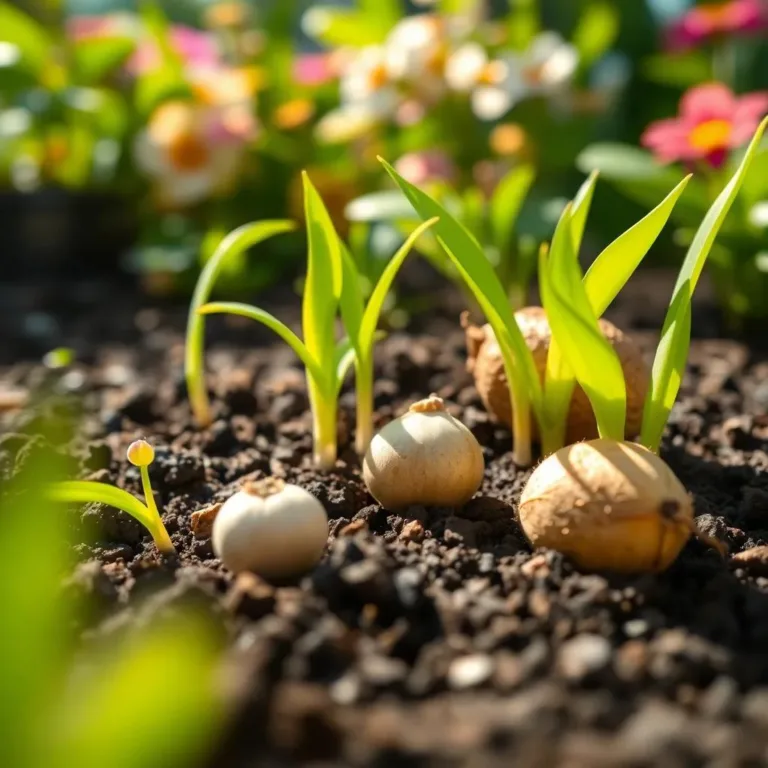Have you ever wondered how a tiny seed transforms into a beautiful plant? It’s like magic happening right beneath the soil! Join me as we explore the fascinating journey of seeds, from their anatomy to the key factors that help them sprout and thrive. Get ready to dig deep into the wonderful world of gardening!
Understanding the Anatomy of Seeds
Let’s take a closer look at seeds, those tiny miracles of nature! Did you know that every seed has three essential parts? Yup! They are the embryo, endosperm, and seed coat. Each part has a special job to help the seed grow into a healthy plant.
- Embryo: This is the baby plant! It’s like a little surprise waiting to pop out. The embryo has two important parts:
– The plumule, which will grow into the stem and leaves.
– The radicle, which turns into the root system.
- Endosperm: Think of this as the seed’s lunchbox! It’s packed with nutrients that give the embryo the energy it needs to start growing. Until the plant can make its own food, the endosperm keeps it fueled!
- Seed Coat: This is like a protective shell. It keeps the embryo safe from pests and harsh conditions while it’s waiting for the right time to sprout. But here’s the fun part: when conditions are right, this coat opens up like a present!
Seeds can be super small, like those from an orchid, or quite large, like a coconut. It’s fascinating! No matter their size, seeds have an amazing ability to survive tough conditions. They can stay dormant for ages, just waiting for water, warmth, and light to spring back to life!
So, next time you plant a seed, think about all the exciting things happening inside. It’s like planting a tiny miracle in the ground! Are you ready to learn how these little wonders actually start to grow? Let’s dive into the germination process!
The Germination Process Explained
Alright! Now that we’ve covered the cool parts of seeds, let’s talk about how they actually sprout. The germination process is like a big show where seeds go from sleepy little gems to full-blown plants. It all begins when seeds absorb water.
Here’s how it works:
- Water Absorption: First, the seeds drink up some moisture. They need just the right amount—too little, and they won’t wake up; too much, and they might drown!
- Swelling and Softening: As the seed sucks in water, it swells up. This swelling puts pressure on the seed coat, making it softer. This is when the fun begins!
- Emergence of the Radicle: Next, the radicle, or the first root, breaks through the seed coat. It’s like the seed saying, “I’m ready to grow!” This little root reaches down into the soil, looking for nutrients and water.
- Plumule Pushes Up: At the same time, the plumule starts to make its way to the surface. This shoots up, seeking light like a little plant superhero!
- Photosynthesis Begins: Once the seedling emerges, it begins to photosynthesize. That’s a fancy word for how plants use sunlight to make food. The green pigment, chlorophyll, helps with this process.
Isn’t it amazing? All this happens thanks to the right mix of water, warmth, and light. Seeds have everything they need to grow right inside them, waiting for the perfect moment to burst into life. The excitement of watching a seed transform is like magic! Are you excited to see how external and internal factors play a role in this transformation? Let’s keep the adventure going!

Key External Factors for Successful Seed Sprouting
When it comes to making seeds sprout, a few external factors hold the key! Just like baking a cake, you need the right ingredients in the perfect amounts. Let’s check out the main players that help seeds wake up from their slumber and start growing!
- Water: You can’t have sprouting seeds without water! Seeds absorb moisture to kickstart the germination process. Think of water as the magic potion that signals to seeds, “It’s time to grow!” But remember, too much water can drown them, so balance is essential!
- Temperature: Each seed has its favorite temperature range. Some love the warmth while others prefer a cooler spot. Warm temperatures usually speed up germination, while cold can put the brakes on growth. Just imagine trying to bake cookies in the fridge—yikes!
- Light: Not all seeds need light to sprout, but for those that do, it’s like flipping the switch to get the party started! Light helps some seeds know when to burst into action. It also helps them produce chlorophyll, which is important for their growth later on.
- Oxygen: Seeds breathe, just like us! They need oxygen for their metabolic activities during germination. If the soil is too compacted or flooded, oxygen can get trapped, making it hard for seeds to sprout. So, let your seeds breathe easy!
By understanding and providing these external conditions, anyone can create an inviting environment for seeds to thrive! Let’s keep the momentum going as we explore the internal factors that also play a part in this amazing transformation!
Important Internal Factors Affecting Germination
Now that we have the outside conditions sorted, let’s peek inside the seed! The internal factors of a seed are just as important as the external ones. These are the things that are tucked away inside, quietly influencing how and when a seed will sprout. Here are some key internal factors to keep in mind:
- Genetic Factors: Every seed carries its own unique genetic blueprint. This means that some seeds are designed to germinate in certain conditions. For example, some seeds may twist and shout to germinate only when they sense just the right light or temperature. Isn’t that cool?
- Seed Age and Quality: Fresh seeds are usually more eager to sprout than older seeds. Just like fruit, seeds have a best-by date! Over time, the chances of germination decrease. It’s important to use high-quality seeds for the best results, so look for reputable sources when buying them.
- Dormancy Mechanisms: Some seeds can be a bit stubborn and choose to stay dormant for a while! This dormancy is a survival tactic that keeps seeds safe until conditions are just right. There are various dormancy types, including physical dormancy (like a tough seed coat) and physiological dormancy (where special signals are needed).
- Nutrient Reserves: Inside the seed, there are little storage rooms filled with nutrients! These reserves, primarily found in the endosperm, give the seedling the energy it needs to grow until it can start making its own food. More nutrients can mean a stronger start for the sprouting plant!
By knowing how these internal factors work, I can better prepare my seeds for successful germination! Now I feel like a pro gardener! With a great understanding of both external and internal factors, we are one step closer to seeing those seeds thrive!
The Critical Role of Water, Temperature, and Light
Let’s talk about the big three: water, temperature, and light! These elements play a major role in helping seeds germinate. Think of them as the ultimate trio, working together to turn little seeds into magnificent plants!
- Water: Water acts as the ultimate life-giver for seeds. When seeds absorb it, they start a process called rehydration. This is where enzymes get activated, breaking down stored nutrients to fuel growth. It’s like a cozy blanket that wakes them up! But if there’s too much water, seeds can rot, so balance is key.
- Temperature: Each seed has its sweet spot when it comes to temperature. For many seeds, warmer temperatures can make them sprout faster. For instance, tropical seeds might prefer a balmy 70°F, while others might need a cool period called stratification to kickstart their growth. Think of temperature as the cozy environment that keeps them comfy!
- Light: Not all seeds need light to sprout, but those that do often rely on it to tell them when it’s time to grow! Light signals can trigger germination, activating processes that help the seedling produce chlorophyll for photosynthesis. It’s like turning on the sun!
So, as we prepare our seeds for success, let’s remember how water, temperature, and light work together like a dream team! By understanding and balancing these elements, we can create the perfect recipe for healthy, happy plants! Happy planting!

